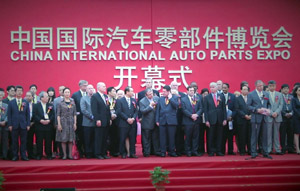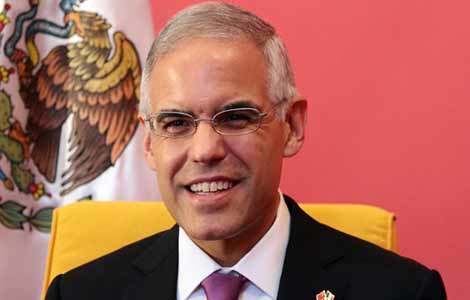A chance to renovate
Updated: 2013-09-22 14:31
By Deng Yaqing (bjreview.com)
|
||||||||
After three decades of dramatic growth, China's economy needs a breather to refuel
Inside a sea-wave-shaped building in Dalian, a coastal city in Northeast China's Liaoning province, political leaders, business elites and economists from around the world hardly exhausted the list of economic issues that have generated plenty of public concern. Among the many buzzwords thrown around was "reform".
|
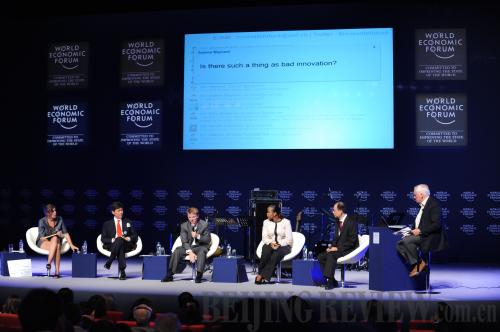 Wrapping up:
Guests discuss the topic Innovating Into the Future on September 13, the closing day of the seventh Summer Davos. [Photo / bjreview.com]
|
It was the venue of the World Economic Forum's Annual Meeting of the New Champions 2013, or the seventh Summer Davos, which ran from Sept 11 to 13 at the Dalian International Conference Center. Under the theme Meeting the Innovation Imperative, the forum focused on China's economy as well as future measures by the new Chinese leadership.
"The new season of the Chinese economic miracle, one of better quality and higher efficiency, is unveiled," said Chinese Premier Li Keqiang at the opening ceremony on Sept 11.
Five years have passed since the eruption of the global financial crisis in September 2008. While the developed world is beginning to show signs of recovery, emerging economies now face the threat of slower growth. China's GDP growth declined from 7.9 percent in the fourth quarter of 2012 to 7.7 percent in the first quarter of 2013, and then further slowed to 7.5 percent in the second quarter.
"China is moving rapidly away from quantitative growth to quality growth. In the past, it heavily depended on a resource-intensive model," Martyn Davies, CEO of Frontier Advisory, a South Africa-based research, strategy and investment advisory firm, told Beijing Review at the sidelines of the forum.
Davies believes the rest of the world, especially export-dependent countries like Australia, Brazil and South Africa, to varying degrees, would be hit by China's slowdown.
"The current slowdown is largely policy-induced, and doesn't mean China is now in the midst of an economic contraction. The 7.5-percent growth target is quite reasonable for the next few years," said Adam S. Posen, President of Peterson Institute for International Economics, a Washington, D.C.-based private, non-profit think tank.
As a matter of fact, since taking office, Premier Li has laid emphasis on ensuring steady growth, adjusting the structure of the Chinese economy and advancing reform, rather than blindly pursuing high-speed GDP growth. "As long as GDP growth doesn't fall short of 7.5 percent and the consumer price index is no higher than 3.5 percent, priority will be given to carry out reforms and restructure the economy," said Yang Shubing, head of the Information Research Department at the Research Office of the State Council, at a briefing in Beijing on September 16.
To fend off shocks from the global financial crisis, China unveiled a 4-trillion-yuan ($653-billion) stimulus package in November 2008. "Though appealing figures were registered, economic growth at that time was qualitatively low," said Davies.
"A short-term stimulus policy could be one way to drive up growth. But after weighing the pros and cons, such an option would not help address the underlying problems" said Premier Li.
China is at a critical stage of economic transformation and upgrading, said Li, and its prospects are promising. This was echoed by Fan Gang, Director of National Economic Research Institute under the China Reform Foundation. "The current slowdown marks the soft landing of China's economy. By going through two or three years of structural adjustments, contradictions will be basically eliminated," said Fan. He added that China was capable of maintaining steady growth in the second half year, but economic expansion at over 9 percent was impossible. "A growth rate floating between 7 percent and 8 percent is the new norm, while a 9-percent growth rate implies inflation and asset bubbles," said Fan.
So far, moves to steer the Chinese economy in a new direction seem to be working. Strong rebounds were also seen in major economic indicators in August.
Consumption-led growth
For years, China's economy has been underpinned by massive investment and foreign trade. Today, such a growth model is no longer feasible with rising local government debt and a gloomy external environment for exports. The 4-trillion-yuan stimulus package, though significant in helping China ride out the global financial crisis, has led to structural contradictions in the economy, which need an urgent solution. As Premier Li pointed out in his speech, expanding domestic consumption is now a top priority when it comes to restructuring China's economy.
Since the ultimate purpose of economic expansion is to improve people's livelihood, the leading factor in driving consumption should be the people, rather than the government. "China's economic growth has become too expensive. Due to large amounts of capital input into the economy through fixed-asset investment by the government, five to six dollars of debt is created per every dollar of growth. Inefficiency is a serious problem," said Davies.
Adam Smith's view that a country's economic growth is closely linked to the size of its market means that a bigger market allows for a more defined division of labor, giving birth to more advanced and innovative technology. With rising productivity, more value will be generated, which in turn will push market expansion, said Zhang Weiying, an economics professor of Peking University, at the forum.

 In pictures: Nairobi mall shooting spree
In pictures: Nairobi mall shooting spree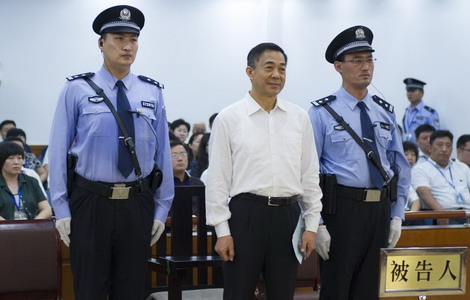
 Bo Xilai gets life in prison
Bo Xilai gets life in prison
 Liaoning carrier completes its furthest sea trial
Liaoning carrier completes its furthest sea trial
 Milan Fashion Week
Milan Fashion Week Oktoberfest kicks off in Germany
Oktoberfest kicks off in Germany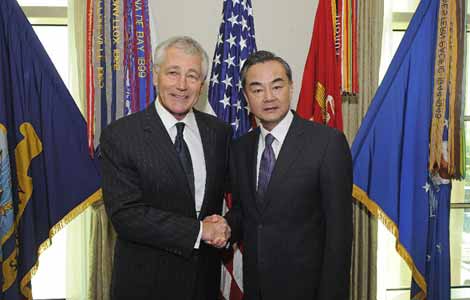
 China, US applaud improvement of military ties
China, US applaud improvement of military ties
 Two family-style eateries are where animals roam
Two family-style eateries are where animals roam
 China braces for super typhoon Usagi
China braces for super typhoon Usagi
Most Viewed
Editor's Picks
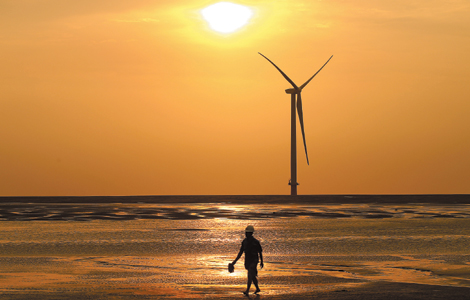
|

|

|

|

|

|
Today's Top News
Bo Xilai gets life in prison
China braces for super typhoon Usagi
Explosive criminal cases drop in China
New Sino-US ties sought
Islamists claim gun attack in Nairobi
China sees drop in donations
Charges against Saudi princess in US dismissed
Trending news across China
US Weekly

|

|
